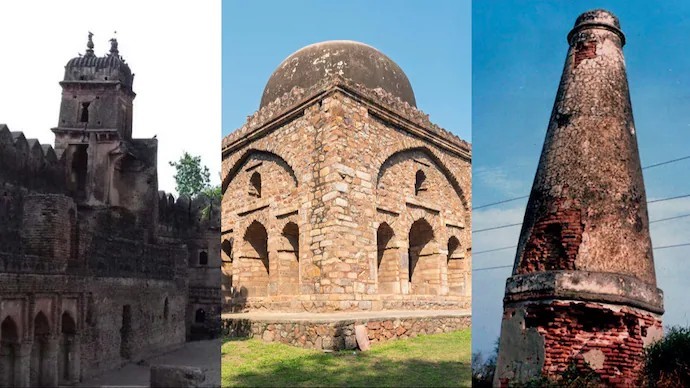
Monuments of National Importance (MNI)

28.03.2024
Monuments of National Importance (MNI)
|
For Prelims:About Monuments of National Importance (MNI),Important points |
Why in the news?
Recently, the Archaeological Survey of India (ASI) has decided to delist 18 protected monuments as they no longer have "national importance".
Important points:
- The 18 'lost' monuments include nine from Uttar Pradesh.
- Also 2 monuments each from Delhi, Rajasthan and Haryana are included. And 1 monument each from Arunachal Pradesh, Madhya Pradesh and Uttarakhand is included.
- At present, there are 3,693 monuments of national importance (MNI).
- What exactly is meant by 'missing' or 'untraceable' has not been clearly defined by either the Ministry of Culture or the ASI.
About Monuments of National Importance (MNI):
- The Ancient Monuments and Archaeological Sites and Remains Act (AMASR Act), 1958 (amended in 2010), provides for the declaration and protection of ancient and historical monuments and archaeological sites and remains of national importance.
- After considering the views/objections received within the prescribed period, the Central Government may declare the ancient monument to be of national importance by publishing a notification in the Official Gazette.
- Once a monument or site is declared an MNI, their protection and maintenance is the responsibility of the Archaeological Survey of India under the Ministry of Culture.
- ASI undertakes the conservation, preservation and maintenance of MNI throughout the country.
- A radius of one hundred meters of the monument is considered a 'prohibited zone' where construction activities are prohibited.
- Beyond that 200 meters (ie, 100+200 meters) is considered a 'regulated area' where there are rules on construction.
- The ASI also has the power to delist monuments it deems "no longer of national importance" under Section 35 of the Act.
- When a monument is removed from the list, the ASI is no longer responsible for the protection of these monuments.
- The highest number of ancient monuments and archaeological sites is in Uttar Pradesh (745 monuments/sites).
Source: India Today